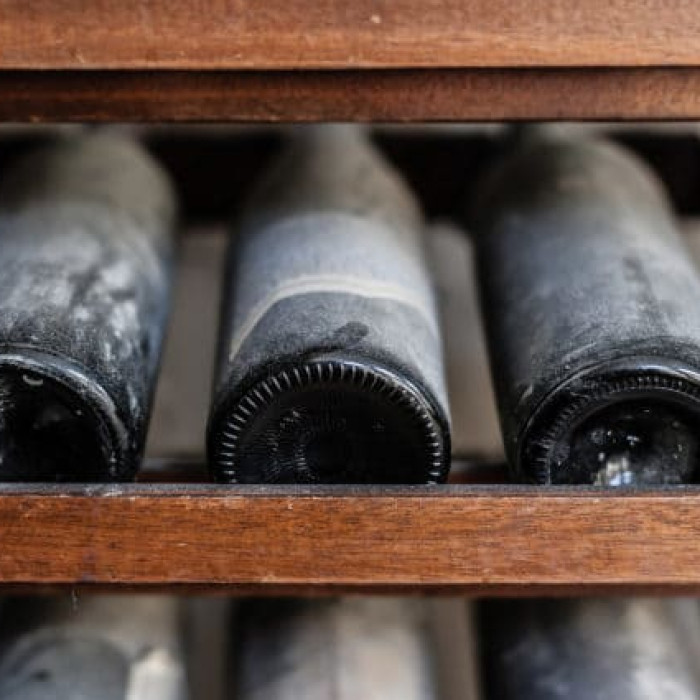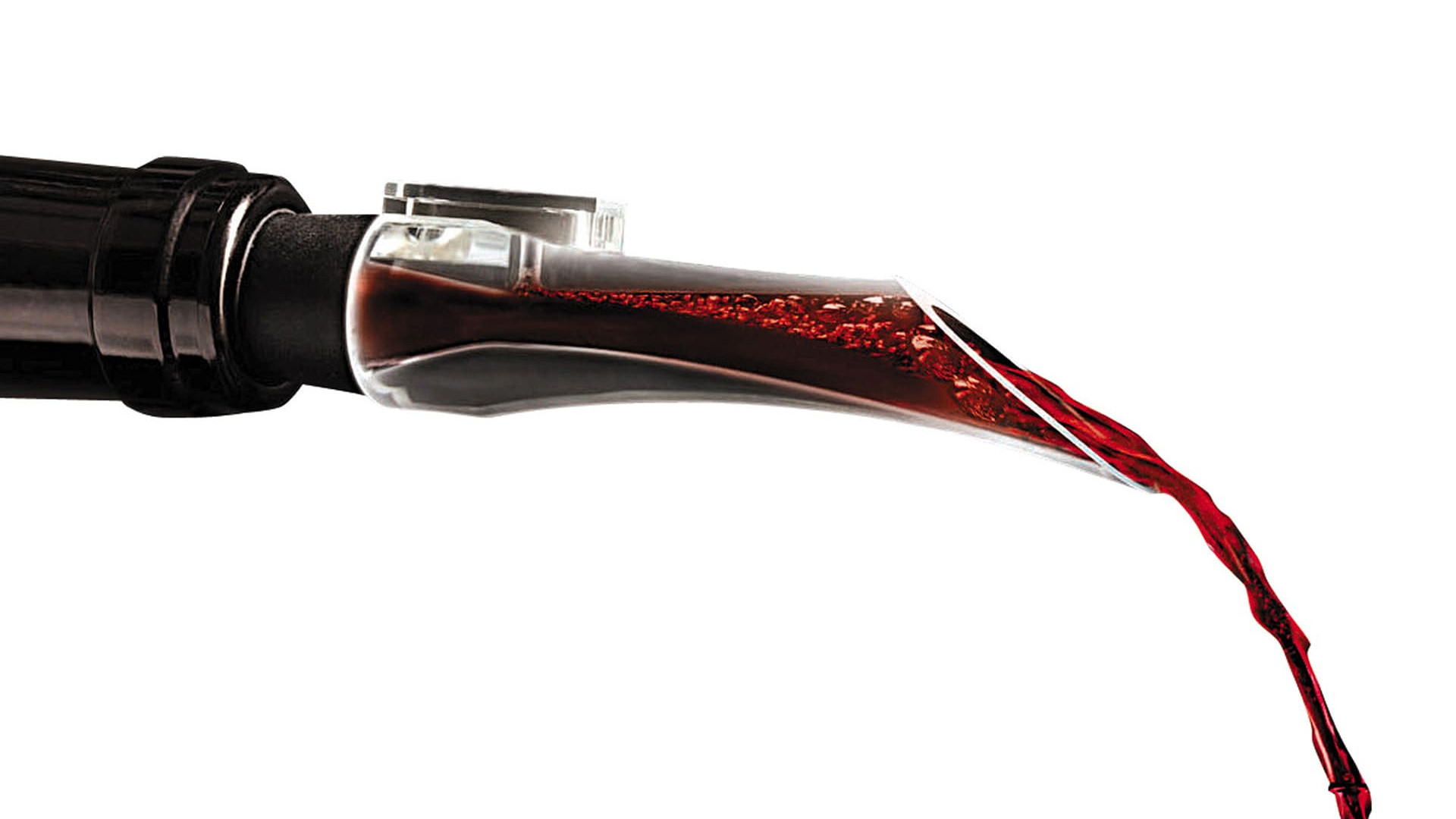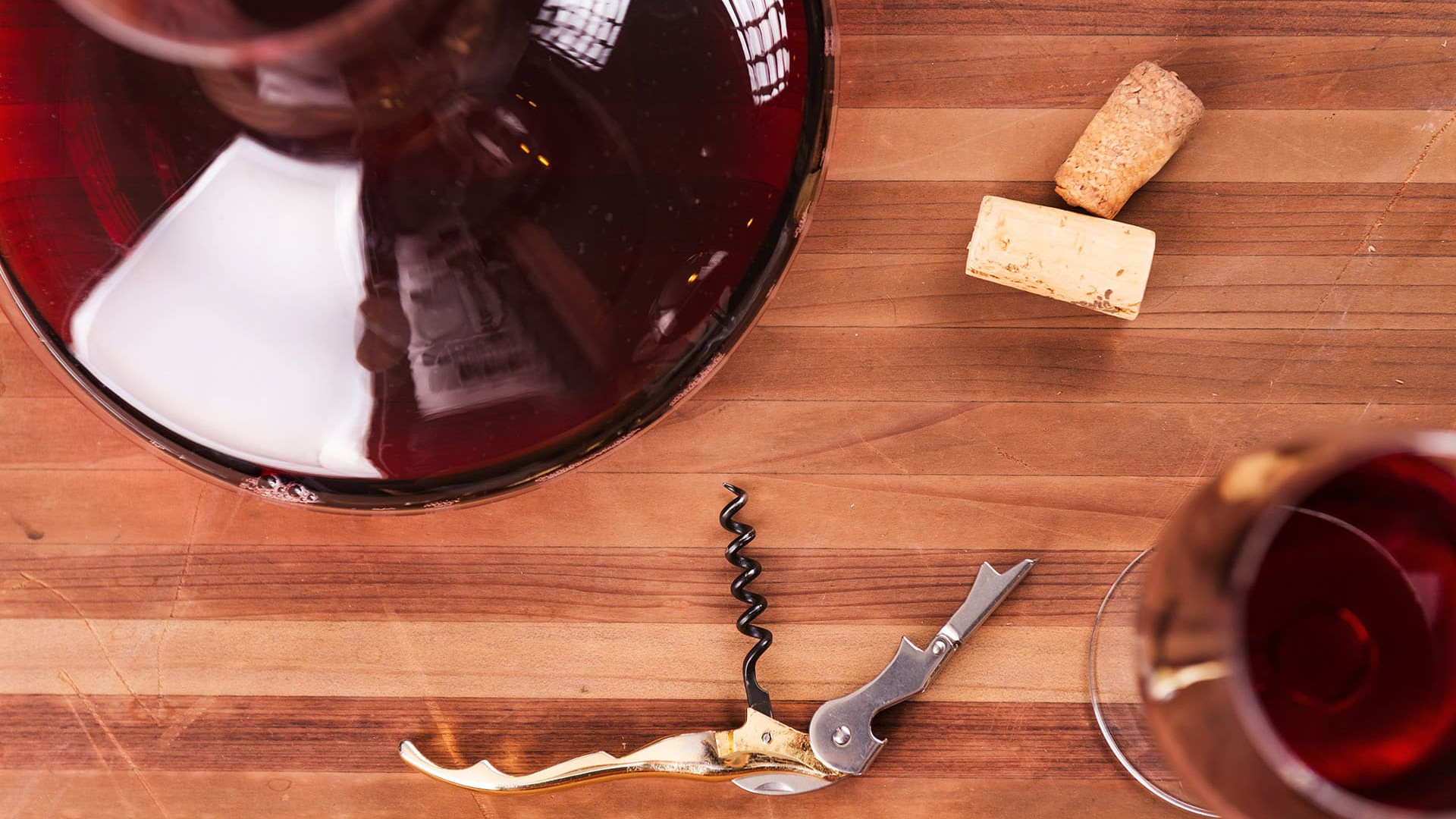[ UNDERSTAND THE WINE ]
Aerator vs Decanter: Which is Better?
_
by Marshall Tilden III

What is the best accessory for aerating wine?
While the premise behind aerating and decanting wine is quite similar, there are some notable differences between the two.
The goal of both is to aerate the wine—that is, to increase its exposure to oxygen. When you expand the surface area of the wine, you increase how much of it is contact with air. This allows the wine to more quickly develop intense aromas and flavors.
But the process isn’t guaranteed magic. Aerating a basic Pinot Grigio will not turn it into a perfectly aged Montrachet. The process of aeration, or limited oxidation, simply allows the potential complexities and nuances of a wine to emerge a bit faster.
So, what’s the difference between aerating and decanting?

Wine aerator.
Let’s start with aerators. Typically, these are small devices that are either placed in or on the bottle or held by hand. Some variations introduce air into the device that the wine travels through, while others disperse the pour through various spouts. However, all serve to increase the wine’s exposure to air while it’s poured.
These low-profile aerators are ideal for young, opulent and tannic reds that may be a bit muted (closed) immediately upon opening a bottle, or whose tannins can overpower the balance of the wine. One of the main functions of aeration is to soften tannins, which allows the fruit and acid to shine through. Just about every wine will benefit from a bit of aeration.
Quick Wine Tip.
Aerator
Use on young wines, particularly big, bold and tannic reds.
Decanter
Use on older wines and more delicate bottlings.

Wine decanter.
However, most aerators won’t address sediment found in some wine. As a refresher, sediment is the grainy buildup of solids in wine that often derives from fermentation and leftover yeast (lees). For most young wines, sediment is a non-issue, but it’s often present in older bottles.
Sediment can also clog some aerators. This can affect the flow of wine and potentially create a messy and unfortunate overflow situation.
Therefore, a decanter is usually the preferred method to aerate older wines from the cellar. When poured slowly and properly, most of the wine’s sediment can be kept in the bottle. This is why many sommeliers use a candle or flashlight to illuminate the glass while pouring, so they can stop pouring once the sediment reaches the neck. This way, you’re sure to only be sipping on fine wine and not choking on grainy, solid sediment.
The art of decanting wine is a time-honored tradition. To watch the ritual of an aged Burgundy as it falls mesmerizingly into a beautifully crafted crystal decanter adds to its enjoyment.
So, to recap, the rule of thumb is simple. For young, big, bold and tannic wines, an aerator will do the trick. But for older, more delicate and fragile selections, grab a decanter and proceed with caution, as those wines may need a little extra care.
Pro tip.
For young wines that need as much oxygen as they can get, double up and aerate the wine right into the decanter. Trust us, it really works.
By Marshall Tilden III / WineEnthusiast
He earned his Diploma in Wine and Spirits from the Wine & Spirit Education Trust (WSET) and is a Certified Specialist of Wine with the Society of Wine Educators.

![[Wine trend] How can you store and organise your wine collection properly during the big spring clean? [Wine trend] How can you store and organise your wine collection properly during the big spring clean?](/media/image/5c/ae/eca3898481571e24a9bafeabaff8.jpg)
![[ About wine ] Valentine’s Day, the ideal time for sharing a good wine [ About wine ] Valentine’s Day, the ideal time for sharing a good wine](/media/image/58/bb/646c2c58568bfe814648a4cca819.jpg)
![[ About wine ] Buying and selling wines at auction: Tips for success [ About wine ] Buying and selling wines at auction: Tips for success](/media/image/0d/b5/d346f1782590abdb5465933842b2.jpg)